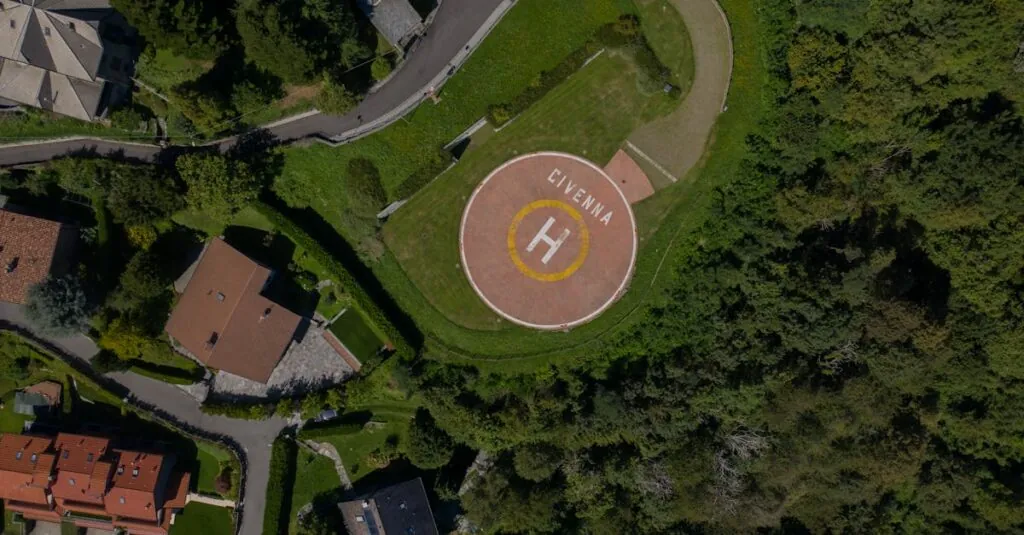Drones have taken the world by storm, transforming the way we capture breathtaking landscapes and unforgettable moments. But before you take to the skies over that stunning national park, it’s crucial to know the rules of the game. Can you really fly your trusty drone among the towering trees and majestic mountains? Spoiler alert: the answer might not be what you expect.
Picture this: you’re gliding your drone over a serene lake, only to find a park ranger swooping in faster than your drone can say “oops.” National parks are sanctuaries for wildlife and nature, and flying drones in these areas comes with strict regulations. So, before you unleash your inner aerial photographer, let’s dive into the dos and don’ts of drone flying in these breathtaking outdoor playgrounds.
Table of Contents
ToggleOverview Of Drone Regulations
Understanding drone regulations is crucial for responsible flying in national parks. Specific rules exist at both the federal and state levels to ensure safety and preserve the environment.
Federal Regulations
The Federal Aviation Administration (FAA) oversees drone usage across the United States. They prohibit flying drones in national parks without special permission. Regulations mandate that pilots must follow recreational and commercial guidelines established by the FAA. Compliance with no-fly zones is essential, as violations may result in fines ranging from $1,000 to $25,000. Registered drone operators should also adhere to altitude limits and maintain visual line-of-sight during flights.
State Regulations
State regulations can vary significantly from one location to another. Some states impose additional restrictions on drone operations within national parks. Certain states require permits for drone use in specific protected areas, often focusing on wildlife conservation and visitor safety. Laws can include bans on drone photography and operational times to minimize disturbances. Drone users are encouraged to research each state’s specific regulations prior to planning flights in national parks. Ignoring these regulations can lead to repercussions, including fines or loss of flying privileges.
National Park Policies
National parks maintain strict regulations regarding drone use to protect wildlife and preserve natural landscapes. Understanding these rules is crucial for anyone considering drone flights in these environments.
General Rules For Drone Use
Drone operators face clear restrictions in national parks. The National Park Service prohibits flying drones without special permission in these areas. Compliance with Federal Aviation Administration guidelines is essential, as violations can lead to fines ranging from $1,000 to $10,000. Additionally, applications for permits can take time, and not every request gets approved. Operators must also monitor specific no-fly zones, which may vary by park. Safety guidelines should always be a priority to ensure that wildlife and visitors remain unharmed.
Exceptions And Special Cases
Some exceptions to the general drone rules exist in national parks. Researchers and park management agencies may obtain permits for specific drone operations that support scientific studies or conservation efforts. Filmmakers might also receive permission for commercial projects, although this often requires extensive documentation. Each request is evaluated on a case-by-case basis, and the need for special circumstances or limited public impact often influences decisions. Understanding the application process and relevant stipulations remains crucial for any drone operator seeking access in national parks.
Consequences Of Violating Drone Laws
Violating drone laws in national parks can lead to significant repercussions, impacting both drone operators and the protected environments they fly in.
Fines And Penalties
Fines for unauthorized drone flights can range from $1,000 to $10,000, depending on the severity of the violation. Penalties vary based on state laws and individual circumstances, emphasizing the importance of compliance. Repeat offenders may face increased fines or stricter enforcement actions from park authorities. Many states also impose additional penalties, reinforcing the need for careful research on local regulations. Drone operators must remain aware that penalties not only impact their finances but can affect their ability to fly in the future.
Legal Consequences
Legal repercussions can extend beyond fines, including potential criminal charges for willful violations. National parks are governed by federal laws, and operating drones without permission may result in deeper legal complications. Justified concerns for wildlife and habitat protection underpin these laws, allowing law enforcement to take action against offenders. Consequences can include civil lawsuits filed by the National Park Service in serious cases. Being informed about these legal aspects assists drone operators in making responsible decisions while flying in these sensitive areas.
Responsible Drone Use In Nature
Drone use in national parks requires careful consideration to protect the environment and wildlife. Being mindful of rules contributes to preserving these natural areas.
Best Practices For Drone Pilots
Follow local regulations by checking both federal and state laws. Respect park boundaries, flying only in designated areas when permitted. Maintain a safe distance from wildlife to avoid disturbances. Fly at reasonable altitudes, minimizing noise pollution and disruption to visitors. Communicate with park staff if uncertain about specific guidelines. Avoid flying in crowded areas or during events, as this can compromise visitor experiences. Plan flights for early morning or late afternoon to limit interactions with wildlife.
Environmental Considerations
Minimize impact on local ecosystems by staying informed about wildlife habitats and breeding seasons. Observe wildlife from a safe distance, ensuring that drone usage doesn’t stress animals. Choose low-traffic locations for flights to lessen the likelihood of disturbing other visitors or wildlife. Respect natural soundscapes by limiting drone noise and powering down in sensitive areas. Preserve the visual aspect of the park by avoiding areas of iconic beauty or solitude. Prioritize the health of ecosystems, recognizing that responsible use helps maintain the integrity of national parks.
Flying drones in national parks is a privilege that comes with significant responsibilities. Understanding the regulations is crucial for protecting wildlife and preserving the natural beauty of these treasured areas. By adhering to the rules set forth by the National Park Service and the FAA, drone operators can enjoy their aerial adventures while minimizing their impact on the environment.
Responsible drone usage not only ensures compliance but also enhances the experience for all visitors. By respecting park boundaries and wildlife, individuals can contribute to the conservation efforts that keep national parks vibrant for future generations. Ultimately, a commitment to responsible flying fosters a harmonious relationship between technology and nature.





